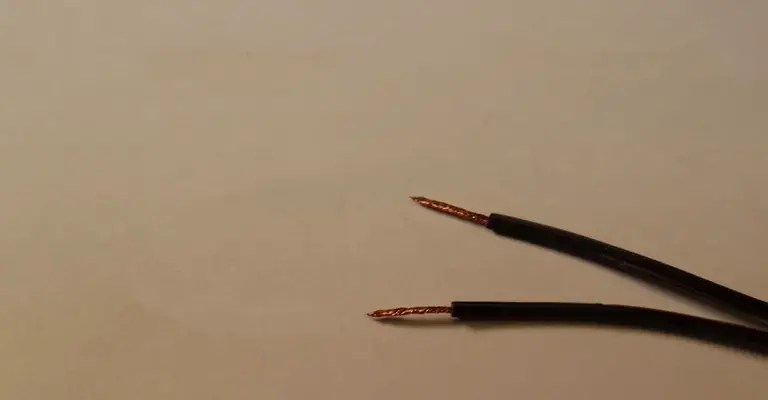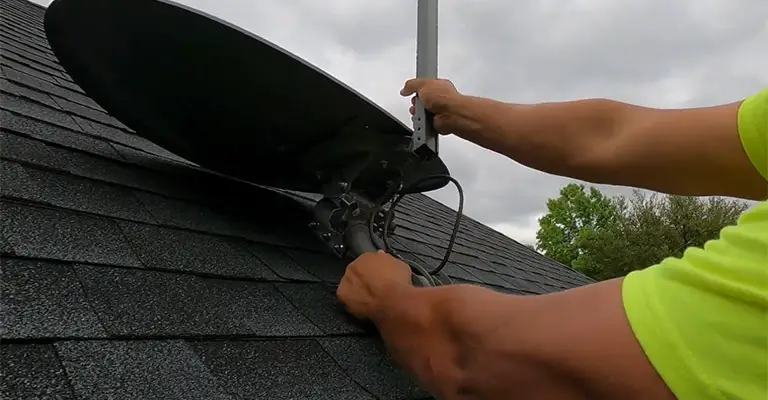Which Wire Is Hot When Both Are the Same Color?
It is important to know which wires are positive and which are negative when working with electrical wires. Some wires’ plus and minus signs are clearly marked, whereas others may not be so obvious.
The first step in identifying the polarity of an unmarked wire is to look at its physical characteristics, such as its color or texture. Then, using a digital multimeter, you can make sure your wires are connected.
What Does The Neutral Wire Color Mean, And What Is A Hot Wire?
Hotwires are not the ones that have a high temperature. They are the ones that carry electricity from the distribution network or from your grounding conductor or ground wire switch to your socket.
Let’s break it down; a 1-phase system is connected to your light source or socket via two connectors that are connected to the breaker panel in your house. Next, light switches are connected to the load wire.

These wires are called live or hot wires because they carry electricity from the breaker panel. Neutral wire: This wire completes the circuit by providing a ground connection.
It is also important for this case to understand the neutral wire color. What is the difference between two black wires and a neutral wire? What is the difference between two black hot wires? Hotwires are normally black, and neutral wires are white.
Therefore, assume that any white wire you see is neutral. If both colors are the same, then detecting the type of wire and its color code will be quite difficult.
Step By Step Guide On Identifying Positive And Negative Wires Using A Digital Multimeter
It is possible to detect the hot wires if they have the same color. The wires can also be said to be positive if they both have the same color. This article will describe the top method for finding the hot wire even if both are black in the electrical system.
It’s the safest and easiest way for finding the hot wire when both are black in the electrical system. Let’s look at how it works.
Step 1
Select the direct current voltage setting on your digital multimeter. Next, choose the symbol that looks like a capital “V” with a straight line over it, which can be found on the multimeter’s selector switch.
Your multimeter should be set to DC voltage (direct current). An analog multimeter should not be used to test polarity. The wrong leads connected to the wrong wires can cause damage to an analog multimeter.
Step 2
Connect one lead to each wire to connect the wires to the multimeter. The lead you connect to the wire doesn’t matter at this point. Put the black lead’s clip at the end of one wire and the red lead’s clip at the end of the other wire.
Connect the black lead to the “COM” port on the multimeter. Connect the red lead to the “V” port on the multimeter.
Step 3
To determine a positive or negative number:
- Look at the reading.
- Check the number displayed on the multimeter’s screen after you attach the leads to the wires. You can either have a positive or negative voltage in your wire.
- If you can’t get a reading, make sure the wires are tightly fastened with alligator clips.
Replace the batteries in your multimeter and try it again if you still aren’t seeing a number on the screen. If you’re still not seeing a reading, you may need new leads.
Step 4
If the reading is positive, the red lead wire is positive. Your leads are connected properly if your multimeter gives you a positive reading, such as 9.2. It means that the wire hooking up to the red lead is positive, whereas the wire hooked up to the black lead is negative.
In the case of negative readings, like -9.2, the leads are reversible, which means the red lead is hooked up to the negative wire.
Step 5
If a negative reading is obtained, switch the leads, so the red wire is now on the other wire. The red lead should be connected to the black lead’s wire and vice versa. Upon flipping the leads, confirm that they are connected to the correct wires by looking for a positive reading.
You may want to check that a reading of -9.2 becomes 9.2. A faulty multimeter would result in a negative reading. The fuses can be checked at an electronics store or purchased a replacement.
Identifying the Hot Wire in a Light Switch
When dealing with electrical wiring, especially in a wall switch where all the wires are the same color, it’s important to correctly identify the hot wire to avoid electric shock.
Begin by turning off the power at the electrical box. Remove the wall switch cover and untangle the two wires. Using a voltage tester, carefully measure voltage between each wire and a known ground.
Typically, the hot wire will show a higher voltage reading. If unsure, compare against the white wires in the electrical box. Always use a wire nut to secure and cover exposed wires once identified. Proper identification is key to safely connecting a light bulb or other fixtures.
Tips
A multicolored wire with black and red conductors is the negative wire, and a red wire is a positive wire. A wire with a white stripe is negative, while a plain black wire is positive if both are black.
You should know that the copper wire on a speaker wire is usually positive. Silver strands are the negative wires on a standard wire used for things like speakers and amplifiers. Copper strands are the positive wires. In many cases, clear casings enclose these wires, allowing you to determine the polarity of each easily.
Finding the three wires coming from the hole in the ceiling where the chandelier or another ceiling light will be hung is the first step when hanging a chandelier or other ceiling light. You must understand that the black wire is the positive wire, the white wire is the negative wire, and the green wire is the ground wire.
Ribbed wires are typically the negative wires of extension cords. Wires with the same color on both sides, such as copper, generally have a grooved strand on the negative side. You can determine which side has the ribbing by running your fingers along the wire.
Final Words
You won’t get a second chance to fix if there was a mistake in electrical wirings such as the ground wire and perfect fan and light fixture, a gaslight fixture, or a wall light fixture. Therefore, before testing the electrical system, it’s always good to check all the points, switches, and joints.
A hot wire is connected incorrectly in three out of five electrical accidents, and some people are unaware of the neutral wire’s color. Can you tell the color code if you see the black wire or the white wire?
When both wires have the same color, it is important to determine which wire is hot. To prevent any possible accidents on your system, follow the above steps to detect the hot wire or identify which wire is hot when both are black. No matter what is hot or not, you should have cover the electrical outlet properly to prevent accident.





